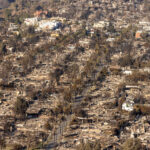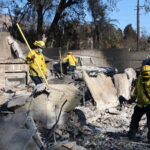Will COVID-19 impact subrogation? Like so much else, the answer is “yes.”

The global effect of COVID-19 is unlike any event in human history. More than 4 billion people—over half of the world’s population—are currently under confinement measures. In just a few short weeks, COVID-19 has impacted nearly every aspect of life across the globe. In the United States, stay-at-home orders started in mid-March. We can only speculate how long this will be the new norm. On March 29th, President Trump suggested the spread of the coronavirus will not peak for at least another two weeks and he extended the national social distancing guidelines through April 30th.
There is little doubt stay-at-home orders will remain in effect into May and some predictions have the lockdown lasting well into the summer. Whatever the timeframe, the ripple effects will last even longer. The impacts will be far-reaching and there will be effects on losses, subrogation claims, and litigation. It is foreseeable that there will be influences on the nature, frequency, and extent of property losses.
Larger Commercial Water Losses
At the time of this writing, 39 states (and counting), Washington DC and Puerto Rico have active executive orders closing non-essential businesses and instructing their residents to stay at home. More than 300 million Americans, which is over 90% of the country, currently live under a stay-at-home order. With millions of businesses closed, commercial properties are sitting vacant.
A water loss that lasts for just an hour can easily result in damages in the six figures. Water losses occurring at commercial properties over the weekend, when no one is there to detect it, often result in hundreds of thousands—if not millions—of dollars in damages by the time the loss is discovered 48 hours later on Monday morning. The risk of loss presented by vacant properties where no one is there to discover losses is so great that insurance policies generally contain a Vacancy Exclusion, which precludes coverage for losses at properties that are unoccupied for a certain number of consecutive days.
Water losses occurring at vacant commercial properties in the coming weeks will, on average, be larger than they would have been had they occurred at any other time. Commercial properties that are not normally vacant for more than a weekend may now go weeks without anyone entering the building. And on the rare occasion when someone enters the building, it is only to quickly grab an item or pick up the mail. Normally small water losses that go undetected during closures will become big losses; normally big losses will become even bigger. A water loss that lasts even an extra hour can spell magnitudes more in damages. Multiply that by hours or days, and the damages could increase exponentially.
Longer Time Element Damages
Executive orders nationwide have shutdown contractors. COVID-19 closures will cause substantial delays in property repairs and, in turn, increase time element losses. Delays in repairing properties for an extra two months or more means extended periods during which insureds cannot live in their homes and insured businesses must remain closed. These repair delays will increase Additional Living Expenses (ALE) and Business Interruption losses. Additionally, the inability to place insureds in closed hotels may further drive up ALE damages.
Even after closure restrictions are lifted and repairs can commence, contractors will face backlogs that will delay repairs further still. A two month closure due to the coronavirus could lead to property repair delays of many more months.
Effects on Manufacturing and Product Liability Claims
The People’s Republic of China has been the world’s factory. The United States, in particular, imported over $500 billion in goods from China in 2018. In America, a substantial percentage of products (or their component parts) that cause water and fire losses—appliances, plumbing fixtures and components, and electronics—come from China. COVID-19 brought Chinese factories and supply chains to a screeching halt. Lockdowns in China are starting to lift but the disruption on Chinese manufacturing continues and will continue for some time to come.
In addition to the shorter-term consequences to Chinese manufacturing, the coronavirus may have farther reaching and longer lasting effects on global manufacturing. Some predict that COVID-19 will cause manufacturing to move away from China and into other countries. For example, in the recent article “Coronavirus Could Be The End Of China As A Global Manufacturing Hub,” Forbes predicted that “[t]he new coronavirus Covid-19 will end up being the final curtain on China’s nearly 30 year role as the world’s leading manufacturer.”
This movement away from China was already occurring, albeit slowly, as Chinese manufacturing costs steadily rose due to climbing wages and increased regulations. Then, in 2019, the shift picked up momentum when President Trump announced tariffs of up to 25% on over $300 billion of Chinese imports. More companies began exploring manufacturing opportunities outside of China, including in Vietnam, India and Mexico. It is possible—if not probable—that the coronavirus pandemic will accelerate this trend.
For months to come, closures, labor shortages, financial issues and other uncertainties will disrupt Chinese manufacturing. After that, we could see manufacturers relocate from China to other countries in Asia and elsewhere at even faster rates. These disruptions and changes to the manufacturing of so many products will breed quality control issues and, in turn, lead to an increase in the number of product failures.
Effects on the Construction Industry and Construction Claims
Construction is similar to manufacturing in that disruptions to the construction process bring about risks of failures. COVID-19 brought construction to a standstill. Many cities and states issued orders giving contractors days to bring construction projects to an abrupt stop. Those sites are now sitting in whatever conditions contractors placed them into before they were forced to suspend the project. If issues were not properly addressed, the project is vulnerable to experiencing losses.
When projects finally resume, will contractors seamlessly pick up where they left off or will steps be missed? Furthermore, contractors will be substantially behind schedule; and, because so many construction materials come from China—from steel to plumbing components and fixtures, contractors may confront additional delays on account of supply chain disruptions.
Large construction projects almost always make time of the essence in the contract and establish a time for completion. While contractors may try to enforce force majeure provisions, contending that COVID-19 was an event outside their control and necessitates extensions, contractors will still look to finish projects as quickly as possible. This, too, can be problematic because it may result in contractors taking shortcuts that can lead to losses.
Like with product manufacturing, disruptions in the construction process cause quality control issues and mistakes. Incomplete projects sitting idle, substantial delays in work, financial issues and contractual time pressures for completing projects will have significant consequences on construction and these effects may result in losses.
Increases in Carelessly Caused Residential Fires
We don’t realize how much of our time is spent outside of our home until we are forced to stay inside it 24/7. With people in their homes all day, every day, activities at home are on the rise—including those activities that cause fires, such as cooking and smoking. In the aggregate, therefore, we might see an uptick in these types of fire losses at residential properties.
Effects on Courts and Claims Departments
Once courts reopen, judges will face months of backlogged motions, conferences and trials. In addition to the backlogged dockets, judges will face an influx of filings that were tabled while the court was closed. Some courts plan to also put a moratorium on trials because the jurors would need to convene in close quarters. In Maryland, for example, trials are being postponed until September. Litigation across the country will be delayed substantially.
These delays may make early mediation more beneficial than ever. Subrogation claims, with fixed property damages, expert-driven issues and sophisticated insurers on both sides, are especially ripe for early mediation. Counsel should explore opportunities to mediate subrogation cases early—both pre-suit and post-paper discovery. Doing so will help claims departments economically move claims that will otherwise stagnate due to COVID-19-related burdens on the judicial system.
These are just some of the many ways COVID-19 may affect property losses, insurers, and subrogation claims. Moving forward, insurers should work closely with their subrogation professionals, outside counsel and experts to develop effective ways to identify cases having recovery potential. Although property insurers are facing an influx of first-party business interruption claims associated with COVID-19 and, consequently, may shift some resources to adjust these claims, it is important that insurers remain focused on recovering their losses. If insurers delay reviewing cases for subrogation potential, valuable information related to the cause of a loss may be lost, resulting in decreases in the insurer’s subrogation recoveries. Thus, insurers should promptly involve subrogation counsel to assist in identifying and prosecuting property losses that have recovery potential.
Was this article valuable?
Here are more articles you may enjoy.

 Bankrupt 23andMe’s DNA Data Gets Sale Nod as Concerns Linger
Bankrupt 23andMe’s DNA Data Gets Sale Nod as Concerns Linger  Catastrophe Experts Tap AI to Tackle Soaring Insured Losses
Catastrophe Experts Tap AI to Tackle Soaring Insured Losses  New Fire Maps Put Nearly 4M Californians in Hazardous Zones
New Fire Maps Put Nearly 4M Californians in Hazardous Zones  After the Flames: Preparing for the Growing Fraud Threat in Los Angeles
After the Flames: Preparing for the Growing Fraud Threat in Los Angeles 